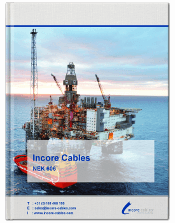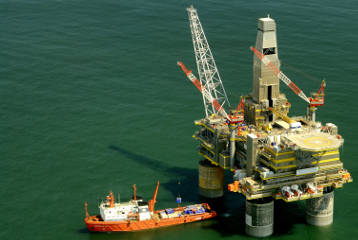SHF1 and SHF2 sheaths according to the NEK 606
The outer sheath of a cable is a very important component. It protects the cable from various external physical elements for example high and low temperatures, oil, water pressure, fire, UV radiation, salt water and mud. The NEK 606 standard qualifies two types of outer sheath: SHF1 and SHF2.
- SHF1: a thermoplastic outer sheath which is halogen-free and causes minimal smoke in case of fire.
- SHF2: a cross-linked thermostable outer sheath which is halogen-free and causes minimal smoke in case of fire.
There are differences between the two kinds of outer sheaths. The SHF1 outer sheath is harder while a SHF2 outer sheath is more flexible. They also are used for different applications and at different locations. For instance, the SHF1 sheaths are used in rooms with IT equipment, in tall buildings like hotels, hospitals and subway systems. The SHF2 sheaths are more common on offshore platforms and vessels.
Are you looking for SHF1 and SHF2 cables?
If you were looking for SHF1 or SHF2 cables and not a blog, you can stop reading. Have a look at the products we can offer you:
- SHF1; all the ToughCat Cables
- SHF2; RFOU 0.6-1 1.2kV P1-P8, RFOU (c) S2 S6, RFOU (i) S1 S5, BFOU 0.6-1 1.2kV P5-P12, BFOU (c) S4 S8 and the BFOU (i) S3 S7
Differences in material properties of the SHF1 and SHF2
Outer sheaths of offshore cables need to be stronger than of any other cable. As mentioned and according to the NEK 606 standard, offshore cables need to withstand all kinds of environmental aggressions.
Besides the above-mentioned differences there are differences in material characteristics as well. It depends on various factoes, such as environmental aspects and application types, whether SHF1 or SHF2 is the better choice. The table below outlines the differences in characteristics between SHF1 and SHF2:
| SHF1 | SHF2 | |
| Type of material | Halogen-free thermoplastics | Halogen-free elastomeric or thermosetting material |
| Mechanical characteristics after immersion in hot oil (IEC 60881-404) |
No requirements | 100 °C for 24 hours:
|
| Hot set test (IEC 60811-507) |
No requirements | 200 °C 15 minutes time under load with 20 N/mm² mechanical stress:
|
| Pressure test at high temperature (IEC 60811-508) |
80 °C, 4 to 6 hours under load depending on cable diameter:
|
No requirements |
| Heat shock test (IEC 60811-509) |
150 °C at 1 hour duration | No requirements |
| Ozone resistance test (IEC 60811-403) (Alternative test method B may be used) |
No requirements | 25 ± 2 °C for 24 hours:
|
An example of a SHF1 outer sheath
PVC is the kind of synthetic material which is often used for outer sheaths. This material is not accepted because it contains chlorine, which is a halogen. An excellent substitute is HFFR (Halogen-Free Flame Retardant). This synthetic material meets the IEC 60092-539 requirements for a SHF1 outer sheath. In case of fire, HFFR will not spread the fire, it will not melt / drip and it does not cause thick black smoke. Most important, it will not emit toxic gases during a fire.
An example of a SHF2 outer sheath
The synthetic material EVA (Ethylene Vinyl Acetate) is a multi-functional elastomer. This material is able to resist high temperatures, oil and harsh weather conditions. This synthetic material meets the IEC 60092-539 requirements for a SHF2 outer sheath. For the use and application in the offshore industry EVA can be composed in a way that it produces a minimum amount of smoke in case of a fire. The cable will not spread the fire and it will not emit halogen acids.
The update of SHF1 and SHF2
Until recently the distinction between the two sheathing materials was not very clear. In the latest version (edition 5) of NEK 606 requirements for oil and mud for outer sheaths (SHF2). demands for outer sheaths have been updated by distinguishing a mandatory minimum level and two optional levels of higher performance. The levels are divided as follows:
- Minimum required oil resistance.
- Enhanced oil resistance.
- Mud resistance.
More about the NEK 606?

Receive our eBook and you will find more information about:
- About NEK.
- Standards.
- Organizational structure.
- Oganizational policy.
- History of NEK 606.







